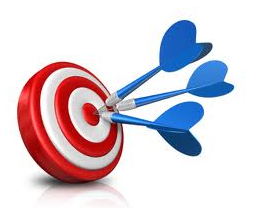Purchasing management is an essential business function that provides products and services that contribute to the company’s output and deliverables. Goods, equipment and raw materials are the lifeblood of many industries. As such, they must be available at the right time, in the right quantity and at the right price. Purchasing management directly impacts company overhead and profits.
Purchasing Management Basics
Purchasing management uses strategic procurement practices that are designed to save money, protect assets and streamline processes. Purchasing management is heavily integrated with logistics, warehousing and supply chain management. Purchasing management involves mutually beneficial relationships with suppliers and vendors that replace the idea of competition with cooperation. Purchasing management requires operational processes to be continually integrated and aligned with strategic plans. The effective implementation of purchasing management and supply chain practices leads to certain business benefits, such as better quality, speed and reliability. Relationship management plays a critical role in strengthening the benefits associated with purchasing management.
Why Purchasing Management Matters
In today’s business world, purchasing management has a huge impact on company finances because it directly drives sales and costs. As a result, purchasing management is quickly becoming a core competency and competitive advantage of many companies. In almost all industries, purchasing takes up half of all business expenses, but is also responsible for half of all business profits. This is because the cost of materials is usually between two to three times the value of labor and processing costs. Purchasing professionals work with management to streamline processes, cut costs and identify better alternatives. There are significant opportunities for most companies to save money by improving purchasing systems.
What are Common Goals of Purchasing Management?
All purchasing managers share similar goals. First, they want to continuously evaluate and improve efficiency and business systems. To do this, they critically evaluate internal departments and external suppliers to identify weaknesses. For instance, a supplier that repeatedly delivers late ships of parts will hinder maintenance professionals with maintaining machinery. If equipment breaks down and causes downtime, it may cost tens of thousands of dollars every minute. To combat this, purchasing managers benchmark supplier performances, such as product failure and on-time delivery rates. The second major goal of purchasing management is adding value to products, services and business systems. Everything that is procured for the company must add a variety of values, such as high durability and low environmental impact.
What Does a Purchasing Manager Do?
Purchasing managers have very difficult tasks to perform. They must continually provide executives with financial updates, operational managers with materials updates and maintenance managers with parts updates. Procurement involves sourcing, negotiating and contracting goods and services valued at millions of dollars. They submit budgetary projects, approve requests and review purchase price variances . They retire old products and introduce new products and suppliers by interviewing and evaluating bids and proposed products and services. They use purchasing management information systems to maintain inventory and procurement records. Purchasing managers provide performance feedback to suppliers and if necessary, terminate vendor contracts.
Related Resource: Client Relationship Manager
In order to be successful, purchasing managers should have strong math, technical and negotiation skills as well as excellent planning, prioritizing and time-management skills.
